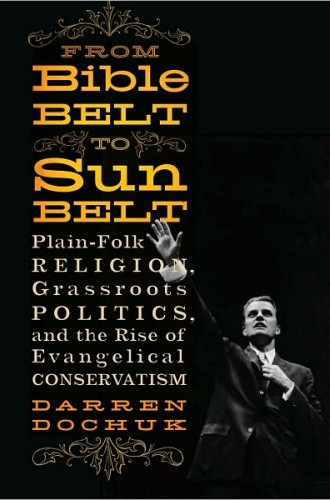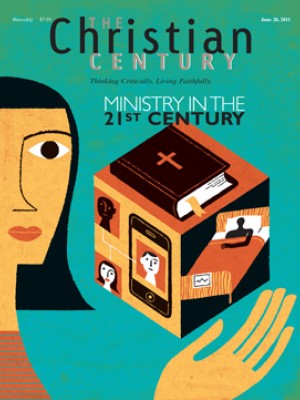Right-wing roots
The scholarly quest to discover the roots of the religious right has already passed through several iterations. The first task was to expose what I have called the abortion myth: religious right leaders' self-generated fiction that their moral outrage over the Supreme Court's 1973 Roe v. Wade ruling bestirred them out of their apolitical torpor and galvanized them into a political movement.
The facts tell a different story. At their meeting in 1971, delegates ("messengers") to the annual gathering of the Southern Baptist Convention, hardly a bastion of liberalism, passed a resolution calling for the legalization of abortion, a resolution they reaffirmed in 1974 and again in 1976. When the Roe decision was handed down, several evangelicals, including the redoubtable fundamentalist W. A. Criswell, applauded it as marking an appropriate distinction between personal morality and public policy. Only later in the decade, following the 1978 midterm elections and the circulation of a film series called Whatever Happened to the Human Race?, which featured Francis Schaeffer and C. Everett Koop, did evangelicals embrace what they had previously regarded as a Catholic issue.
Read our latest issue or browse back issues.
Having dispensed with the abortion myth, a second generation of scholars has peeled back additional distortions to reveal the deeper historical impulses that would come to the fore in the late 1970s. Steven P. Miller's Billy Graham and the Rise of the Republican South examines the complicity of the 20th century's most famous evangelist. For good and obvious reasons, some historians, such as Lisa McGirr in Suburban Warriors: The Origins of the New American Right, have trained their focus on Southern California, especially Orange County, as a kind of petri dish for political conservatism.
Darren Dochuk's very impressive book From Bible Belt to Sunbelt builds on the work of both McGirr and Miller and pushes the narrative back another generation or two. Politically conservative evangelicalism, Dochuk insists, can be traced to what he calls the "western South," states like Arkansas, Texas and Oklahoma.
The story, according to Dochuk, goes something like this. Evangelical emigrants from the western South fled the Dust Bowl and headed toward Southern California, where they encountered a culture steeped in progressive thinking. "Faced with a fragmented culture, in which their beliefs seemed at odds with dominant liberal viewpoints," Dochuk writes, "southern evangelicals began constructing an alternative system of churches and schools, and proclaiming their brand of Christian nationalism as a counterweight to progressive notions of citizenship."
Beginning in the late 1940s, this cohort of transplanted evangelicals, prodded by an array of preachers and entrepreneurs, united first with one another and then with various business interests to create a formidable political force, one that drew on evangelical educational and cultural institutions that perpetuated the linkage between Southern California and the western South: John Brown University, Pepperdine College (later University), Campus Crusade for Christ, radio station KGER, Trinity Broadcasting Network and others. That coalition eventually helped propel Ronald Reagan to the governorship in 1966 and assisted Richard Nixon's reelection in 1972. By the late 1970s, this Sunbelt coalition, embodied in the religious right, had sufficient national influence to ensure Reagan's election to the presidency in 1980.
Dochuk's argument is far more nuanced and textured than I can replicate here. From Bible Belt to Sunbelt is the product of prodigious research; the author probes everything from local church newsletters to university and presidential archives. He covers such colorful figures as J. Frank Norris, Norvel Young, James Fifield, J. Vernon McGee, "Fighting Bob" Shuler and Pat Boone, whom Dochuk describes as an "evangelical statesman." The fears of the cold war figure into the story. "I don't want to live in a Communist United States," Boone declared at a Southern California rally in 1961. "I would rather see my four girls shot and die as little girls who have faith in God than leave them to die some years later as godless, faithless, soulless Communists." Dochuk recounts evangelicalism's entanglement with the John Birch Society and a bizarre populist old-age pension plan called the Ham and Eggs movement.
At times the narrative sags beneath the author's ambitions. In an aside, Dochuk places the Puritans at Jamestown in 1607, and he misstates the early history of Calvary Chapel—mistakes that may be relatively inconsequential in themselves but nevertheless cast suspicion on his broader generalizations. More seriously (and unaccountably), he seeks to rehabilitate the abortion myth, asserting that Southern California evangelicals greeted the Roe decision with "immediate alarm." I scoured the footnotes to find a warrant for that claim. Dochuck cites one letter to the editor of the California Southern Baptist—but another Baptist voice he cites in the same footnote (but doesn't quote in the text) actually supported the ruling.
Despite the fact that the economic fortunes of these evangelicals began to rise with defense spending, they developed a fierce aversion to government, an apparent consequence of evangelicals' attraction to various businessmen and free-enterprise advocates. Although this part of Dochuk's narrative is arguably the most fascinating, it also highlights the limitations of his study. The author blithely recounts the machinations of George Pepperdine, Walter Knott, George Benson, the Chamber of Commerce and other advocates of the free-enterprise gospel without questioning the provenance of such ideas: "The gospel of wealth became a blueprint for political economy framed by the philosophy of free enterprise, which southern evangelicals almost universally considered a Christian and American system of thought."
The real conundrum here, which doesn't seem to trouble Dochuk in the least, is how the evangelicals of Southern California came to embrace these principles that seem to violate the teachings of the New Testament ("Lay not up for yourselves" and "Sell all you have and give to the poor") as well as the sensibilities of 19th-century evangelicals. Charles Grandison Finney and many of his contemporaries excoriated capitalism and opined that business ethics was an oxymoron. (Finney thought that businesses should style themselves after Bible societies.)
How did evangelicalism evolve from Finney's trenchant critiques of capitalism to Ronald Reagan's paeans to free enterprise? That long and winding road may well have threaded through the western South and Southern California, and Dochuk's excellent book tells much of that story. But the transformational signposts along that crucial journey are missing from this account. For an exploration of the roots of the religious right we must look to the next generation of scholars—those willing to push the narrative even further, back into the 19th century.






